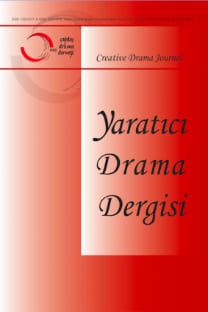100 Temel Eser’de Kadın İmgesinin İncelenmesi
Yazınsal nitelikli çocuk kitapları, yansıtmış olduğu olay, durum, karakter ve görseller aracılığıyla çocuk okurun cinsel kimliğini, benlik algısını ve toplumsal rolünü etkiler. Çocuk edebiyatı yapıtlarında yer alan bu öğeler, yaratıldığı toplumun kültürel ve toplumsal değerleriyle oluşur ve çocuğun kadın ve erkek cinsiyetine yönelik algısını biçimlendirir. Bu biçimlenmenin temelinde, sosyal, kültürel ve ekonomik değerler vardır. Bu yönüyle, çocuk edebiyatı yapıtları oluşturulurken kültürel ve toplumsal değerler, eğitsel ilkeler bakımından sorgulandıktan sonra çocuk okura sunulması gerekir. Çünkü geleneksel değerleri bünyesinde taşıyan çocuk edebiyatı yapıtları, kadını ve erkeğin toplumsal rolünü ve haklarını farklı gösterebilir; kadını toplum dışına itebilir, kadını cinsel bir nesne olarak sunabilir. Bu durumda, çocuk okurlar, kendi cinsiyetine yüklenen rollere ilişkin geleneksel/kalıp yargıya dayalı bir algı geliştirebilir. Kadın ve erkeğe yüklenen anlamın çocuk edebiyatı yapıtlarına olumsuz bir biçimde yansıması, çocuk okurun, kadın ve erkeğe yönelik algısında (cinsel kimlik, toplumsal cinsiyet) kalıcı etkiler yaratabilir. Türkiye'de Milli Eğitim Bakanlığı, “100 Temel Eser” adı altında içinde öykü, roman, şiir, tekerleme ve manilerin bulunduğu bir liste önermiştir. Bu listedeki öykülerde, "kadın imgesi"nin nasıl yer aldığının bilinmesi gerekir.
Anahtar Kelimeler:
Çocuk edebiyatı, 100 Temel Eser, Kadın imgesi, Toplumsal cinsiyet, Öykü
Investigation of Woman Image in 100 Basic Literary
Literary children books affect sexual identity, self-perception, and social role of child reader via the event, situation, character, and visuals it reflected. These elements covered by children literacy books consist of the cultural and social values of the society in which they are created and form the perception of child about male and female sexes. In the basis of this form, there is a socialization process developed by social, cultural, and economic values of the period. In this regard, while creating children literature books, cultural and social values are required to be presented to the child reader after questioning in terms of educational principles. Because, the children books covering traditional values might show the role and rights of male and female differently; might push woman out of the society; and might present woman as a sexual object. In this instance, child readers might develop a traditional/negative perception about the roles attributed to their sexes.The negative reflection of the meaning attributed to male and female in children literacy books might impact permanently the perception of child reader about male and female(Sexual identity, Social role). Minister of National Education has recommended a list called “100 Basic Books”, which includesnarratives, novel, poetry, nursery rhyme, and mania for the purpose of creating reading custom and culture. It is needed to know how those narratives on this list present woman.
Keywords:
Children literature, 100 basic books, Woman image, Sexual roles, Narratives,
- ISSN: 1305-8177
- Başlangıç: 2006
- Yayıncı: Gençlik Kulübu ve Çağdaş Drama Derneği
Sayıdaki Diğer Makaleler
Kadın Müzesi “Kadın Eli Değen Müze”
Kadınların “Toplumsal Cinsiyet” Algılarının Renkler ve Objeler Üzerinden İncelenmesi
Anadolu Kadınında Ezilmişliğin İtibarı
Edebiyat Eğitiminde Unutulmuş Kadın Yazarlar
100 Temel Eser’de Kadın İmgesinin İncelenmesi
Nami Eren Beştepe, Tuba Çay Sağlam
Çocuk Eğitimevindeki Kadın Görevlilerin Sanata Yönelik Görüşlerinin İncelenmesi
Nami Eren Beştepe, Tuba Çay Sağlam
Kadınların “Toplumsal Cinsiyet” Algılarının Renkler ve Objeler Üzerinden İncelenmesi
Masallar ve Toplumsal Cinsiyet Rolleri Oluşturma Sürecine Katkıları
